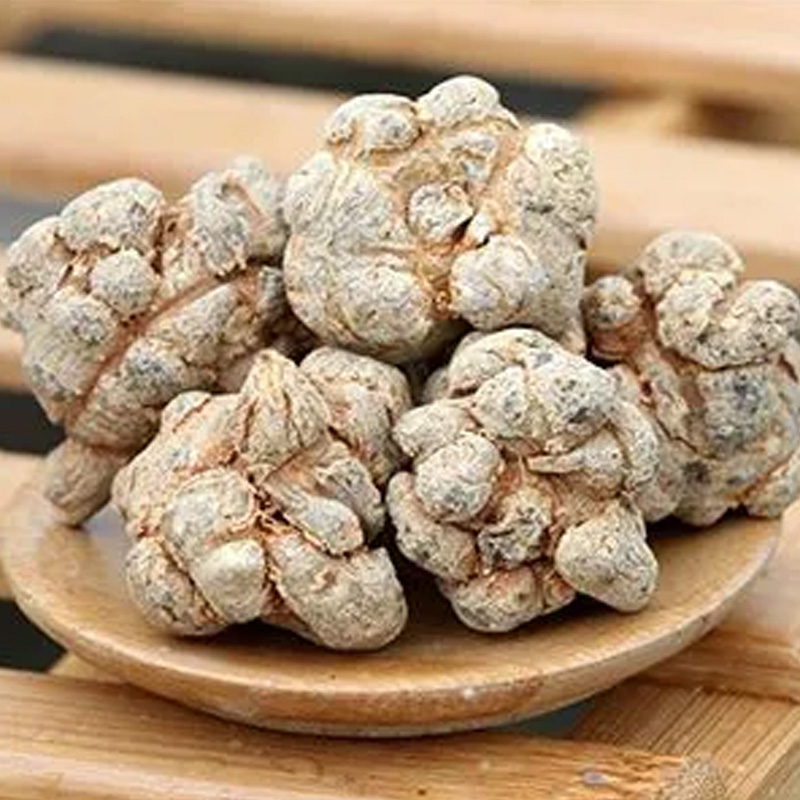THREE SEVEN

THREE SEVEN
Sanqi, a traditional Chinese medicine name, is the dried root of Panax Notoginseng (Burk.) F.H. Chen, a plant in the Panax genus of the Araliaceae family. Here is a detailed introduction about Sanqi:
1、 Basic Information
Family: Araliaceae, Panax genus
Plant type: Perennial herbaceous plant
Nicknames: Shan Qi, Jin Bu Huan, Blood Ginseng, Ginseng Sanqi, Ginseng Sanqi, Tian Qi, Dian Sanqi, Pan Long Qi
Origin: China, mainly distributed in Yunnan, Guangxi and other places, mainly cultivated
2、 Morphological features
The main root is spindle shaped.
The stem is hairless.
The small leaves are oblong, inverted or oblong in shape.
Umbelliferae inflorescence solitary stem apex, hairless or sparsely furry; Flowers light yellow green; The filaments and petals are of equal length.
The fruit is flattened and kidney shaped, with a bright red color.
The flowering period is from July to August, and the fruiting period is from August to October.
3、 Growing environment
Sanqi is a shade plant that prefers warm and slightly damp environments.
Cultivation should choose neutral to slightly acidic sandy loam soil with good drainage and irrigation conditions, loose and rich in organic matter, and humus soil is the most suitable. Continuous cropping should be avoided.
4、 Medicinal efficacy
Nature and Taste Returning to the Classic: Sweet taste, slightly bitter, warm nature; Return to the liver and stomach meridians.
Main benefits:
Dissolve blood stasis and stop bleeding, promote blood circulation and relieve pain.
It is mainly used for various bleeding syndromes, such as blood stasis, swelling and pain, and injuries caused by falls and bruises, which belong to the category of blood stasis obstruction.
Modern pharmacological research:
Effects on the blood system: It can significantly shorten bleeding and clotting time, and has antiplatelet aggregation and thrombolytic effects; It can promote the proliferation of multifunctional hematopoietic stem cells and has hematopoietic function.
Effects on the cardiovascular system: Panax notoginseng saponins can counteract various experimental arrhythmias, significantly increase coronary flow, and reduce myocardial oxygen consumption and oxygen utilization efficiency. Panax notoginseng preparations or total saponins of Panax notoginseng have significant antihypertensive effects.
The impact on renal function: Sanqi has unique therapeutic effects in improving blood rheology and renal microcirculation, reducing urinary protein excretion, and protecting renal function.
Eliminating oxygen free radicals and anti-aging effects: Panax notoginseng saponins have a certain effect on eliminating oxygen free radicals.
Affects substance metabolism: Sanqi powder can prevent the absorption of fat in the intestines of rabbits, reduce total lipid levels and triglyceride content.
Other functions: Panax notoginseng saponins also have immunomodulatory, anti shock, anti experimental liver injury, and tumor prevention effects.
5、 Usage and dosage
Oral administration: decoction, 3-9g; At the end of the research, 1-3g; Or into pills or powder.
External use: apply grinding juice; Or apply it at the end of the study.
6、 Precautions
If excessive intake of Sanqi is taken, it can cause nausea, frequent vomiting, bleeding tendencies such as bloody sputum, nosebleeds, gum bleeding, and excessive menstruation.
Pregnant women should take it with caution.
Sanqi powder can cause allergic drug rash, and allergy testing is required before use.
7、 Economic value
Sanqi is one of the main components of the famous Yunnan Baiyao, with high medicinal and economic value. Meanwhile, Sanqi is also one of the important varieties in the traditional Chinese medicine market, with high market demand and high prices.
Sanqi is a traditional Chinese medicine with various medicinal effects and economic value. Its cultivation and processing are of great significance for promoting the development of traditional Chinese medicine and the prosperity of local economy.




